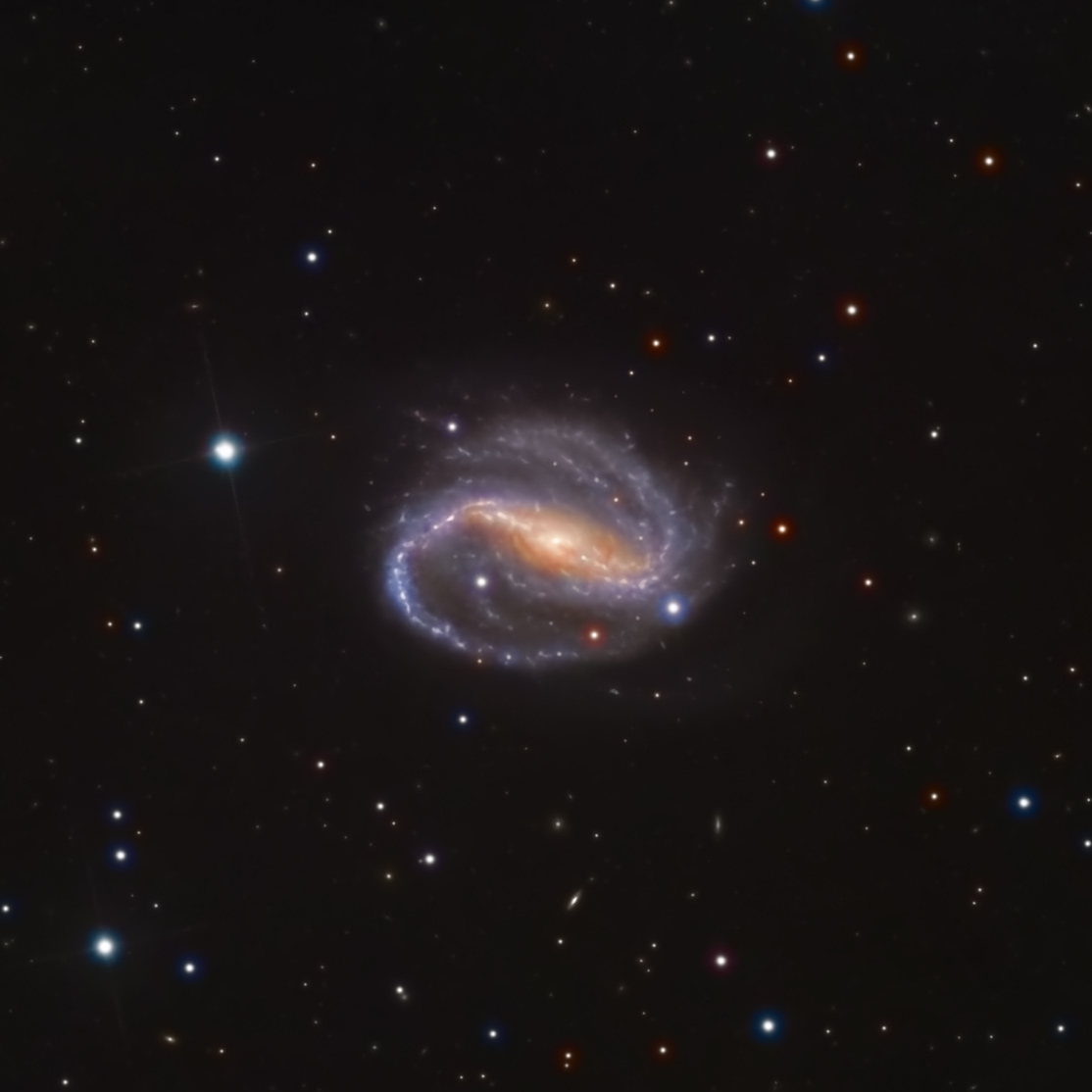

NGC 7479 NGC 7479 is a magnitude 11.45 barred spiral galaxy, showing extensive spiral arms with newly formed
stars and glowing clouds of gas. The galaxy is estimated to be about 105 million light-years from Earth and about the size of our own Milky Way Galaxy, approximately 100,000 light-years across. A long
bar-shaped structure and spiral arms that are not symmetrical are visible in its central region. These unusual features are thought to be evidence that NGC 7479 is cannibalizing another galaxy in a merger
that began perhaps 300 million years ago. This image is show at full resolution, but severely cropped. Click on the links above to see uncropped versions. Technical Information: L:R:G:B: 825:180:180:240 (a total of almost 24 hours of light-frame exposure time); luminance was a blend of 15-minute images and 5-minute images; red and green exposures were all 15-minute exposures;
blue all 20-minute exposures. The luminance layer consisted of 43 fifteen-minute images through the luminance filter and 36 five-minute images. The red channel is a combination of twelve 15-minute images thorugh
a red filter. The green channel is a combination of twelve 15-minute images through the green filter. The blue channel is a combination of twelve 20-minute images through a blue filter. Equipment: RC Optical Systems 14.5 inch Ritchey-Chretien carbon fiber truss telescope, with ion-milled optics and RCOS field flattener, at about f/9, and an SBIG STX-16803 camera with
internal filter wheel (SBIG filter set), guided by an SBIG AO-X, all riding on a Bisque Paramount ME German Equatorial Mount. Image Acquisition/Camera Control: Maxim DL, controlled with ACP Expert/Scheduler, working in concert with TheSkyX. Processing: All images calibrated (darks, bias and sky flats), aligned, combined and cropped in Pixinsight. Color combine in Pixinsight. Some finish work (background neutralization,
color calibration, deconvolution, some sharpening and noise reduction) done in Pixinsight; some cleanup finish work was done in Photoshop CC. Location: Data acquired remotely from Sierra Remote Observatories, Auberry, California, USA. Date: Images taken on many nights in August of 2022. Image posted September 28, 2022. Date: Image scale of full-resolution image: 0.56 arcseconds per pixel. Seeing: Generally good; luminance images varied in FWHM from 1.6 to 2.5 arcseconds. CCD Chip temperature: -25C Copyright 2022
Mark de Regt
The uncropped versions of my image seem to show some molecular cloud or some integrated flux nebula in the frame (particularly at the left
edge of the frame, just below the middle; and the upper half of the frame, above the galaxy). I believe this is real (not either light pollution or a processing artifact), but I also believe that it is
in our galaxy, and we're just looking through it to get to the galaxy I'm imaging. Clicking on the uncropped versions of the image will bring up an inverted version, adjusted to show the low-brightness p
arts; there are a number of wispy areas, which I suspect are molecular cloud/flux nebula.
As always with a large field of view, there are many, many small background galaxies; there's a lot going on out there!
I last imaged this 19 years earlier, with a smaller scope, from my suburban yard. To see that effor, click here